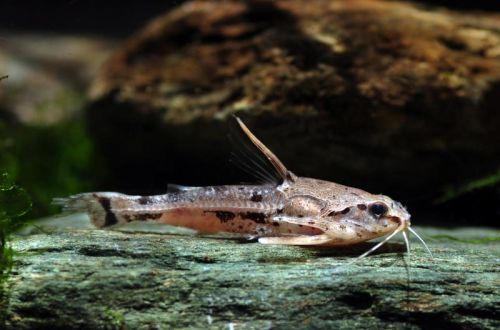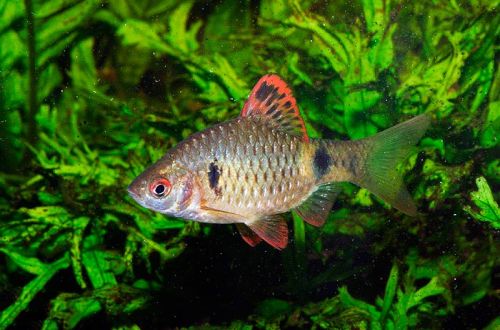
Catfish Corey Acutus
Large-spotted corydoras or catfish Cory Acutus, scientific name Corydoras acutus, belongs to the family Callichthyidae (Shelled or Callicht catfishes). Both names indicate features of this species. The first is due to the black markings on the top of the dorsal fin. The second comes from the Latin word acutus, meaning “elongated”, alluding to the pointed shape of the head.

The fish is native to South America, where it is found throughout the vast Amazon River basin in Brazil, Peru, Ecuador, and possibly Bolivia.
Contents
Description
Depending on the specific region of origin of Cory Acutus, its body pattern may vary. Some scientists believe that several species can be hidden under one name, including recently discovered, but not yet scientifically described, these are Corydoras under the numbers C024, C077 and C109.
As mentioned above, a distinctive feature of the species is a large black marking on the dorsal fin and a somewhat elongated muzzle. The coloration is gray with numerous black specks. Under certain lighting, emerald shades can appear on the head.
Brief information:
- The volume of the aquarium – from 100 liters.
- Temperature – 22-28°C
- Value pH — 6.0–7.5
- Water hardness – soft to medium hard (2-12 dGH)
- Substrate type – sand or gravel
- Lighting – moderate or bright
- Brackish water – no
- Water movement – light or moderate
- The size of the fish is 6–7 cm.
- Food – any sinking food
- Temperament – peaceful
- Keeping in a group of 4-6 fish
Maintenance and care
Corydoras are among the easiest aquarium fish to keep. They are able to live in a relatively wide range of hydrochemical parameters, do not impose high requirements for decoration (soft soil and several shelters are enough), and eat almost all food of a suitable size. And thanks to its peaceful Narva, there will be no problems with choosing suitable neighbors. The main thing is not to settle too large, territorial and even more aggressive predatory fish.
Maintenance of an aquarium with Corydoras large-spotted is standard and applicable to most other species. Maintaining a stable aquatic environment is of key importance, which is achieved through the uninterrupted operation of the equipment and the regularity of a number of mandatory procedures: weekly replacement of part of the water and removal of organic waste.





